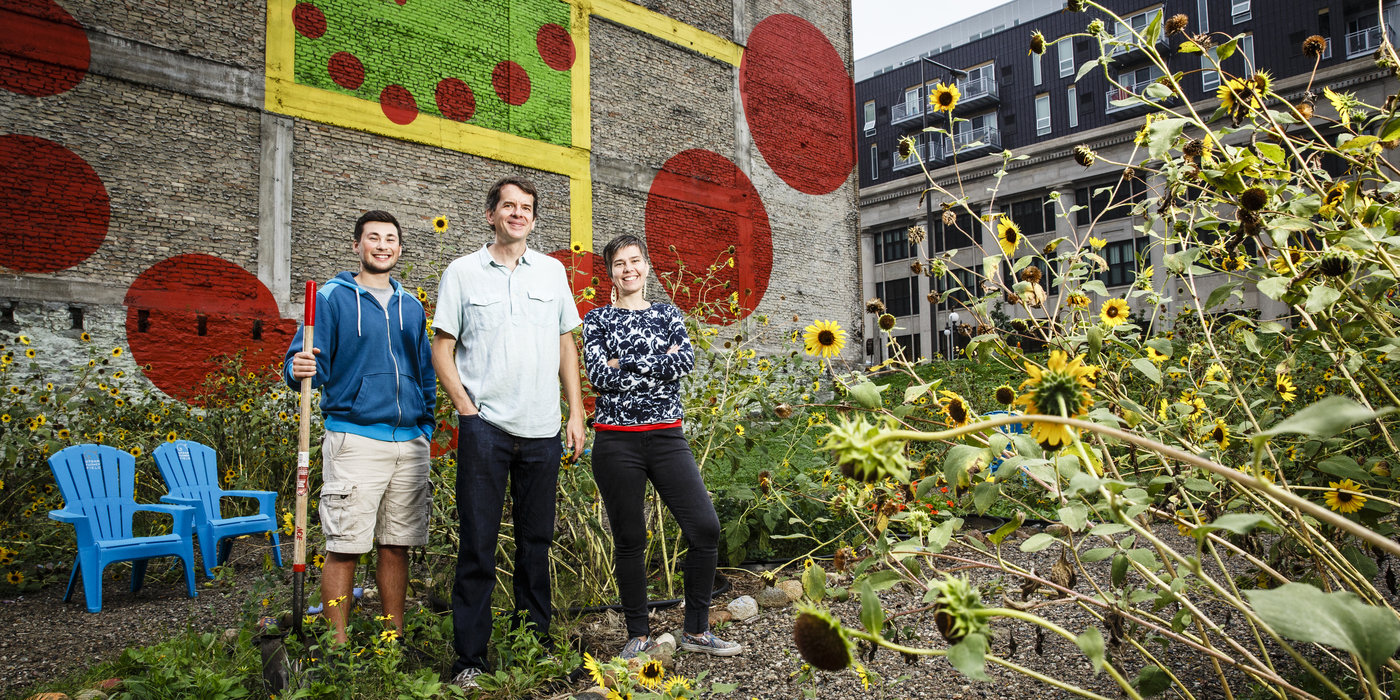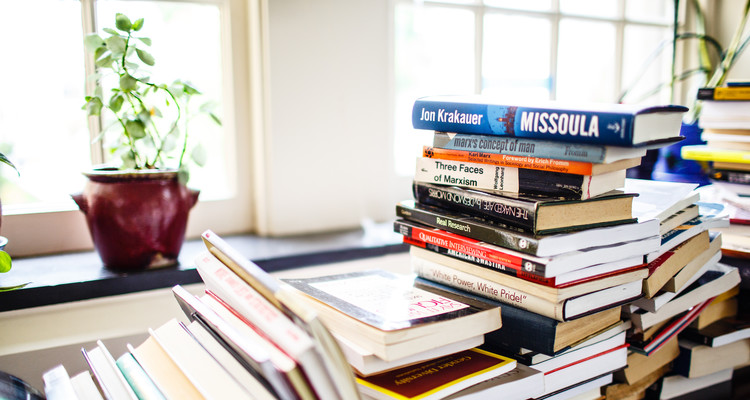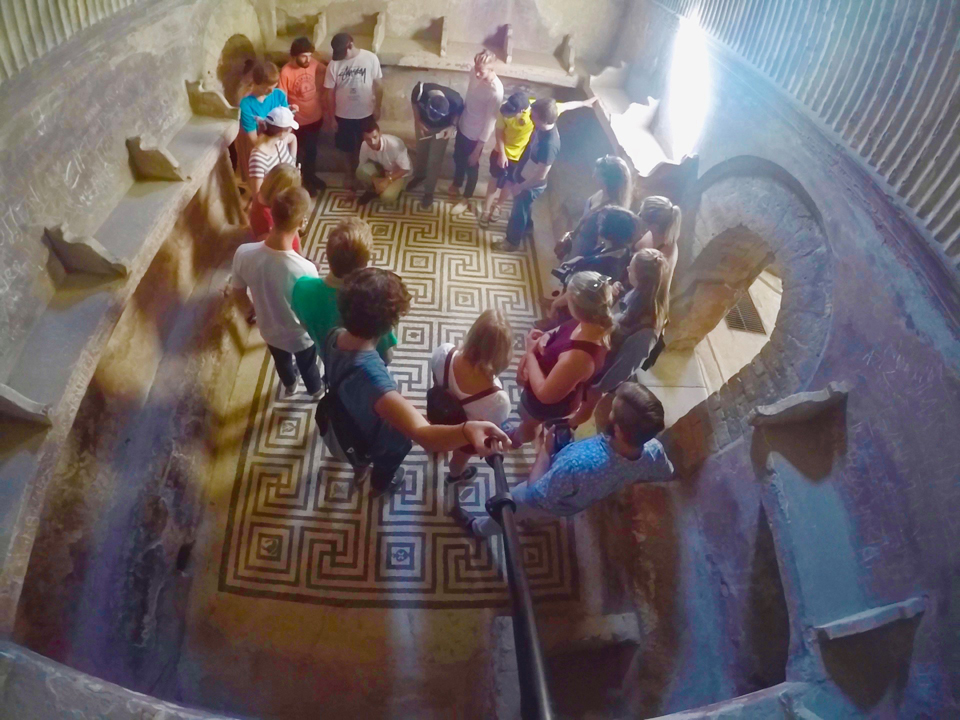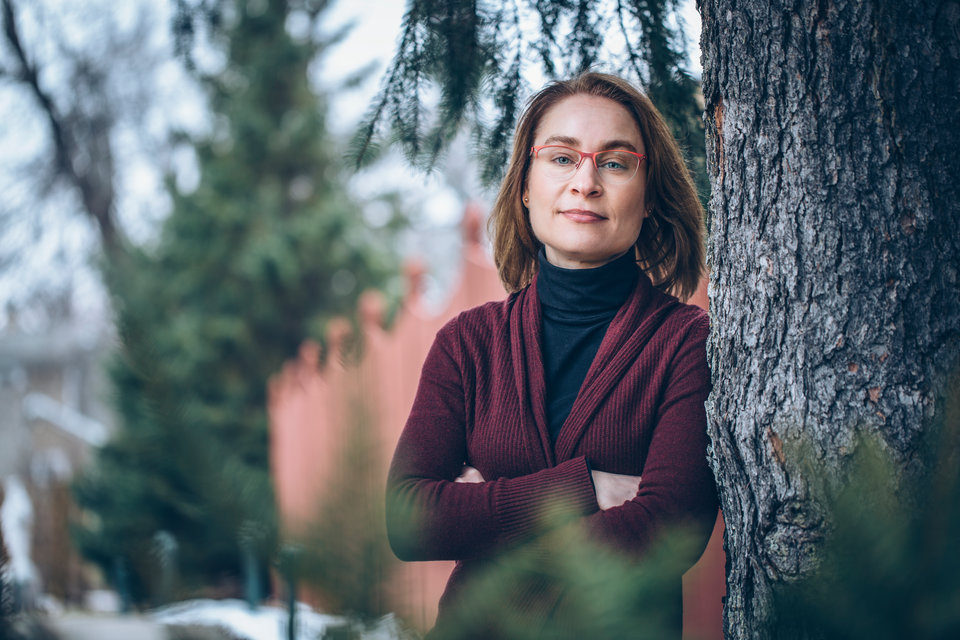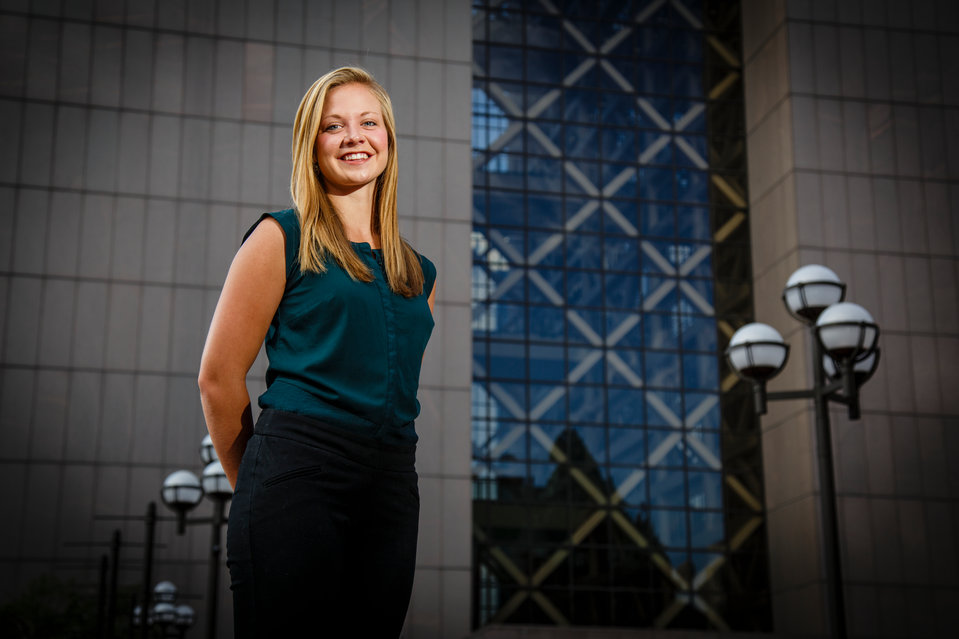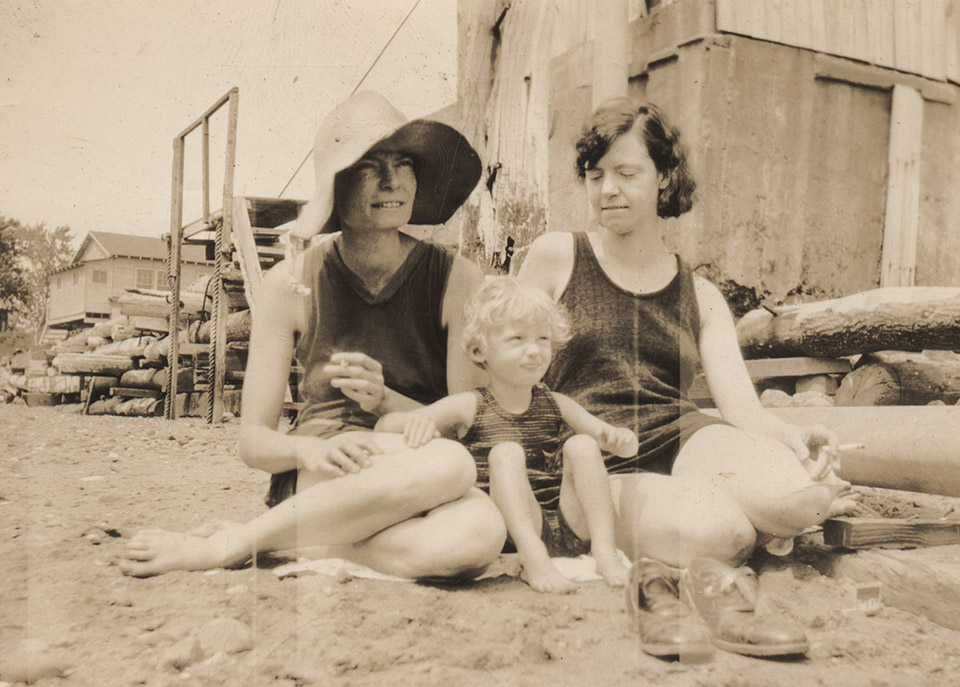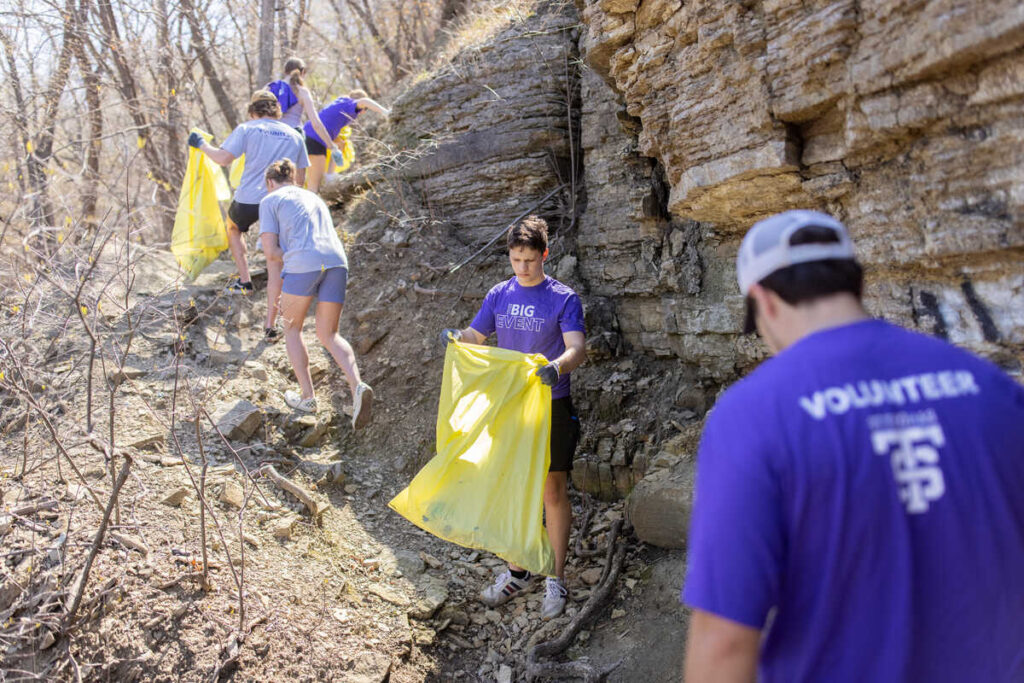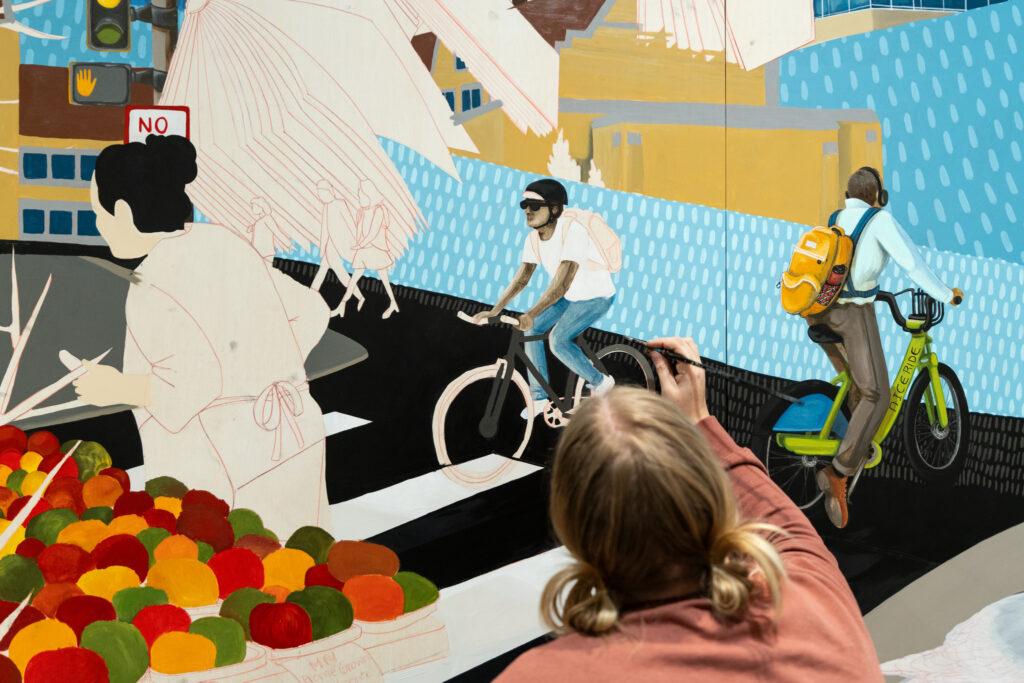The future of agriculture faces a number of challenges. Global demand for food is predicted to double by 2050. We already use about 40 percent of icefree land for agriculture, and much of the rest is either not suitable for agriculture or is especially important for biodiversity conservation. As a result, future production gains to feed a growing world population will have to come mostly from increasing yields on existing agricultural lands. Unfortunately, yield gains in the last 20 years have fallen short, by far, of where they need to be to meet the growing demand.
As if that were not distressing enough, the environmental impact of agriculture is already unsustainable. Agriculture accounts for about 30 percent of greenhouse gas emissions that are causing global climate change, soil fertility is rapidly depleting and nutrient pollution from farming has created massive “dead zones” at the mouth of the Mississippi and other rivers around the world.
These challenges facing our food system can be emotionally overwhelming, particularly for college students preparing themselves for prosperous and fulfilling lives. One response would be to ignore the predictions, go about our normal lives and assume – or hope – that someone else will create the changes we need for a sustainable future. But many young people are realizing that solutions will require massive collective action, and they need and want to be part of it. The question is – how? What can people do, right now, to make a difference? And how can educators help inspire and empower young people to lead us to a more productive, just and sustainable food system?
Introducing Stewardship Science
Over the last five years, my students and I have developed an urban agriculture program that combines scientific research with educational opportunities and community service. We call this approach Stewardship Science. Our aim is to generate scientific results that increase yields and reduce environmental impacts of small-scale agriculture in cities, while at the same time creating tangible benefits to improve the lives of people on campus and in our community. Although classroom-based education and community service activities are typically kept separate from research, this research-service hybrid approach is perfectly suited for urban agriculture and other sustainability projects embedded in human communities. (By “sustainability,” we mean the maintenance of diverse and productive environments in which humans are embedded.) Our projects provide a gateway for socially conscientious students to become involved in scientific research and offer tangible opportunities for social impact.
A research garden on campus
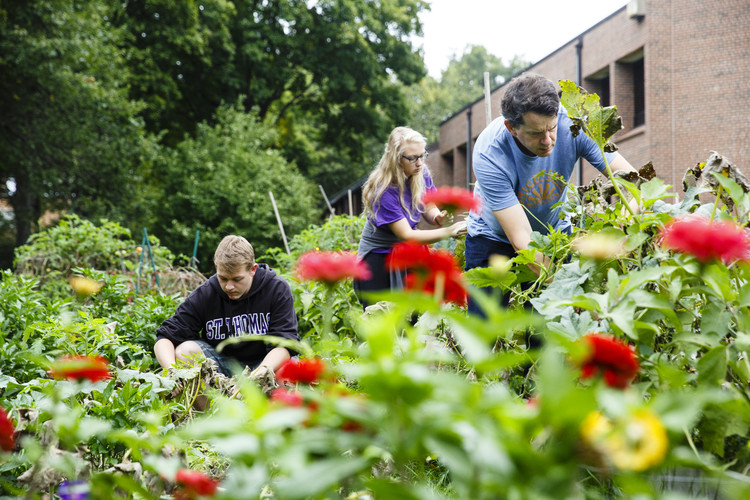
Students Elliott Magnuson (Biology) and Heidi Hill (Biology) work with Professor Kay in the University of St. Thomas Stewardship Garden.
The Stewardship Science project began with a pilot program in 2010, when students Megan Sheridan and Aaron Hays worked with me to establish a community garden on campus that would combine agricultural research, educational opportunities and community service. After a successful inaugural season in a backyard behind one of the houses on Summit Avenue, we were given permission to develop a site behind the Brady Educational Center off of Goodrich Avenue. With the help of a grant from St. Thomas’ Campus Sustainability Fund in 2012, we created the Stewardship Garden by building raised beds and adding other landscaping features. Now, in 2015, it consists of over a 1/2 acre of vegetable plots and pollinator gardens.
The Stewardship Garden continues to be a productive research site. Its core consists of 32 community-garden-style raised beds. Their size – 6 foot by 6 foot – and number give us the opportunity to test hypotheses by assigning beds to different experimental treatments, such as fertilizer type or planting strategy. Using raised beds allow us to precisely manipulate soil conditions year after year.
Our first major study, conducted in 2012-13, was led by students Ashela Richardson, Quinn Wrenholt and Leann Luecke. They examined the importance of crop diversity (e.g., crops planted in eight-species assemblages vs. crops planted in monocultures, where each bed contain plants of only one crop) and fertilizer type (synthetic vs. organic). They tested how these factors affect plant growth, crop nutrition and soil quality. Their research found that diverse plantings within a plot increased yield by over 70 percent compared to monocultures, suggesting that planting strategies even in small urban gardens can have dramatic effects on productivity. This is exciting because it suggests we can use positive interactions among crop varieties to increase yields without having to add additional fertilizer. Richardson presented these results in a talk at the national meeting of the Ecological Society of America in 2013 in Minneapolis.
Ongoing work by students Haley Zimmerman and Heidi Hill explores how composting and mulching strategies affect yields and environmental impacts. This work will help us determine how local organic waste can be recycled back into the food supply, rather than lost into our waterways that already face nutrient pollution.
Linking science research to community engagement
Urban agriculture can provide multiple social and environmental benefits, such as strengthening local economies, promoting community engagement, increasing dietary intake of vegetables and creating urban greenspace. Our aim with the Stewardship Garden project is to have our research activities extend these benefits and, at the same time, make more people aware of global agriculture challenges.
To do this, participants in the Stewardship Science project have organized a number of educational and service activities that build upon the research work. The Stewardship Garden has been incorporated into classes from a broad range of academic departments, from Theology to Geology, and has provided a setting for student gatherings to discuss the importance of biodiversity, urban agriculture and food justice issues. It also has helped to galvanize other sustainability activities across campus.
The garden also has provided service to the campus and the community in several ways. Since 2012, our students have donated over 8,000 pounds of fresh produce to our food shelf partner, Neighbors Inc. In 2014, Zimmerman and other Stewardship Garden students launched the St. Thomas Farmers’ Market located on the John P. Monahan Plaza in the center of campus; revenue from the market buys garden supplies and supports student research activities. In addition, our students have worked with the Wellness Center to use our garden produce to enhance campus nutrition programs.
Expanding into the community
We have begun to diversify the impact of our work by establishing new projects in the community. In 2014, our team received another grant from the St. Thomas Campus Sustainability Fund to launch a project we called Growing Science. We worked with the St. Paul Parks and Recreation Department to establish garden sites at two St. Paul community centers, West 7th and Conway. Our research was led by three biology students – Jake Anderson, Kristen Bastug and Sam Harvey – with help from biology professor Chip Small. We were interested in the potential tradeoffs between increased yield and the environmental impact of urban agriculture. By comparing the effects of six types of compost – consisting of different mixes of barley, cow manure, leaves and pine bark fines – to synthetic-fertilizer and no-fertilizer treatments, we found that local organicwaste compost can produce high yields, but it also results in a lot of early-season nutrient loss into groundwater. We are now going to see if this nutrient loss is significant enough over an entire growing season to flow out of the system and contribute significantly to nutrient pollution in local waterways.
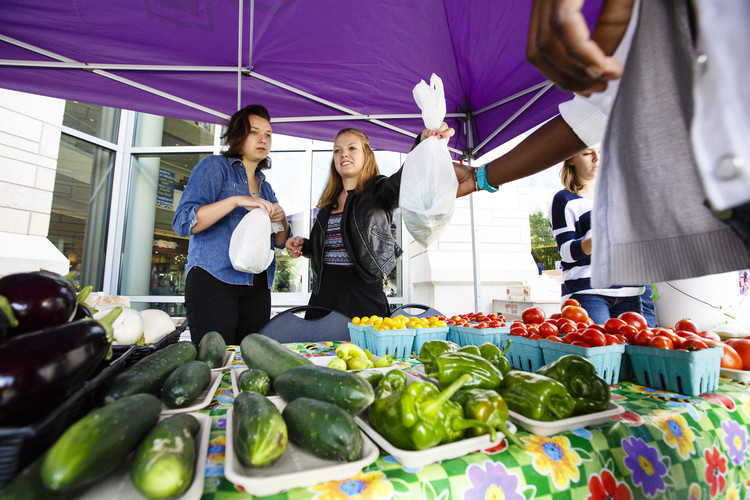
Student volunteers Marnie Sciamanda (Biology) and Ashley Brundrett (Biology) sell produce at the St. Thomas Farmers Market.
The Growing Science team also did a lot to engage each local community in the two projects. Working near community centers gave our students the chance to talk with the community members, lead tours and play with local kids. They added features to make the site inviting, including engraved signs, an archway, benches, flowers and attractive signs designed by artist Abby Kapler. They also hosted events and educational presentations at the West 7th Community Center to promote efficient and sustainable urban agriculture. Finally, they worked with two high school interns from Urban Roots, an organization that provides urban farming experiences for at-risk youth.
BrightSide Produce - from community service to social entrepreneurship
One putative benefit of urban agriculture is its ability to increase fresh food access in underserved communities. In reality, commercial urban growers typically sell their produce to high-end restaurants or at farmers markets in wealthier communities. Targeting upscale consumers makes economic sense because it is expensive to grow vegetables in small plots embedded in a city. However, if urban agriculture is going to be part of a broad social justice movement, it has to provide benefits that extend to the whole community.
Our project, BrightSide Produce, is trying to address this issue. Founded in June 2014 as a collaboration between the University of St. Thomas and Community Table Co-op, BrightSide is an economically sustainable business model to make fresh produce more available in low-income urban neighborhoods. The core operation involves a team of neighborhood youth, led by Adam Pruitt and Deedee Fuller, and university students who make regular deliveries to corner stores in underserved areas. BrightSide currently serves 14 corner stores in the Near North and Phillips neighborhoods in Minneapolis.
Produce distributors generally do not provide viable service options for corner stores in poor neighborhoods. They require minimum orders or have high prices. Because of this, corner store owners often buy produce at grocery stores and restaurant wholesale suppliers and then resell it at higher prices. That takes time and money, and the result is secondhand produce for sale at high prices in a challenging sales environment.
The BrightSide project solves this problem while overcoming a key challenge faced by many community initiatives – it funds itself. Produce that is left over from corner store sales is sold to St. Thomas students, faculty and staff through a “Buyers Club” program. Proceeds from sales to stores and the Buyers Club go to support BrightSide’s youth. BrightSide activities also provide community-based educational experiences for classes in academic programs such as communication and journalism and English and provide research opportunities in social work and biology. By making food insecurity tangible, BrightSide is hoping to help our students develop the empathy and experiences they need to make lasting social contributions.
BrightSide continues to expand. Under the leadership of St. Thomas student Emma Button and our BrightSide youth (Pruitt, Fuller and David Hodge), we created a sidewalk farm stand at Fremont Market in north Minneapolis, in the heart of an underserved area. To make the stand viable while we raised awareness and created demand in the neighborhood, we partnered with residents living near the University of St. Thomas’ St. Paul campus. These neighbors pledged to buy $10 worth of any produce that is left over after the stand closes. This arrangement has allowed us to sell all of our produce every week, generating income for the neighborhood youth running the stand in Minneapolis.
It seems as if we are starting to catch on with the people we serve. As Button reported after an August farm stand shift: “Snapshots from the farm stand today: two little boys who can now correctly identify and pronounce zucchini. One little girl who, after stopping by for weeks, finally convinced her parents to come and grocery shop from us. People cheering from passing cars when we kept the stand open in the rain. This is what becoming part of a community feels like.”
Vacant lots - the next frontier
The future of urban agriculture lies in the development of the extensive vacant space that is part of every U.S. city. In St. Paul, there are over 5,000 acres of vacant public and private land, about 14 percent of the city’s land area. These spaces depress property values and limit economic development.
We are interested in using temporary ecological research to help transition vacant spaces to more productive uses. Our initial project is called the Urban Flower Field, located on the corner of Robert and 10th streets in downtown St. Paul. Students Hunter Gaitan and Liz Scherber collaborated with me and artist Amanda Lovelee to establish the project in 2014. Lovelee, an artist-in-residence for Public Art Saint Paul, designed an amazing space that features 96 plots arranged in spirals that extend out from a circular central patio. Field stones, colorfully painted by community members, line each of the spirals. Colorful Adirondack chairs provide places for visitors to sit. The design plan of the space is reflected in a vast mural painted on a brick wall bordering the site. A truly unique aspect of the project is that we have a science experiment embedded into public art. Gaitan and Scherber use the 96 plots to test how wildflowers can interact to remove contaminants from the soil.
This project also has encouraged community interaction. The site is a public space, and residents, professionals and visitors often gather there informally. Public events at the site, including stone painting, film showings and art-science discussions, have further facilitated community engagement. An informal survey revealed that the visitors think the project has transformed the space from “unhappy” to a “lovely place that serves as a green community gathering space.” The aesthetics and conceptual aspect of the site led to a “Great Places Award” presented by the Sensible Land Use Coalition, a regional organization aimed at promoting urban development.
My collaborators and I think that this project can provide a model to help urban agriculture expand into vacant spaces, and we are eager to launch more art-science hybrids to make this happen. Collaborations with artists such as Lovelee greatly increase the project’s value to the community, and give our students the chance to broaden their experiences. The benefits to the community can help secure the civic, foundation and business support needed to make projects economically viable. Moving forward, we hope to use this approach to create productive agricultural sites that can temporarily fill space but then cede to more permanent economic development when the opportunity arises.
Integrating science and community service to meet the St. Thomas mission
Global agricultural and other environmental challenges create an evermore pressing need for us to fulfill the St. Thomas mission to inspire “morally responsible leaders who think critically, act wisely and work skillfully to advance the common good.” By linking scientific inquiry with community service, our program is seeking to help students make a tangible difference as scientists, social entrepreneurs and community activists. We hope this approach can help bring people together to create a more vibrant and sustainable future.
Read more from CAS Spotlight.
